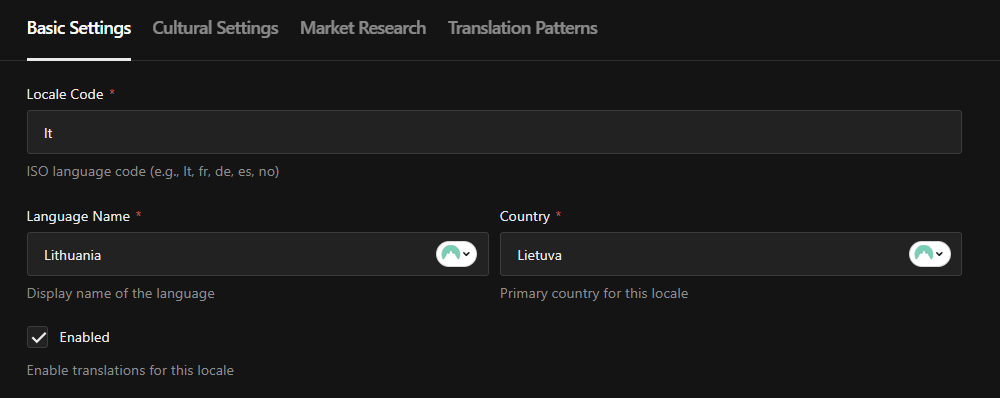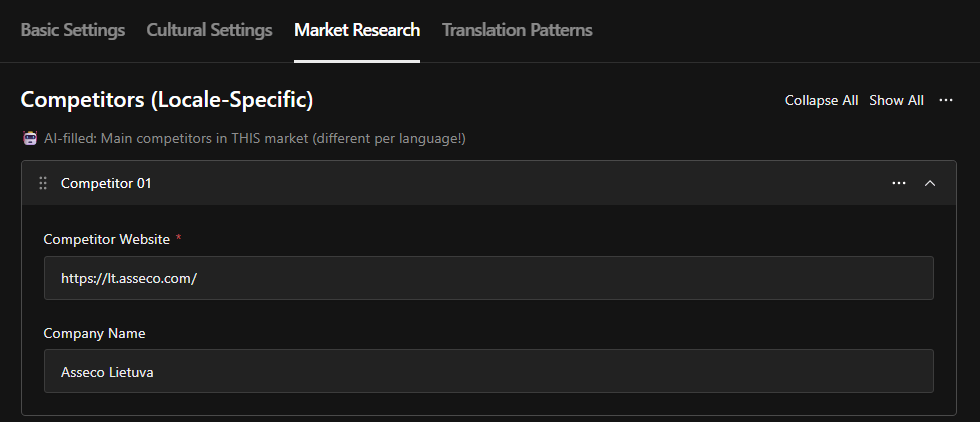Ultimate AI Content Generator Plugin for PayloadCMS

When You Have Great Ideas But Struggle to Write About Them
We're builders, not writers. At Mygom.tech (opens in new tab), our team churns out proof-of-concepts and internal tools that actually solve real problems. But when it comes to documenting those wins? That's where we hit a wall. We had a backlog of case studies and technical blogs - tools that could help hundreds, just sitting in Notion because nobody wanted to write them. Our engineers dreaded spending hours on content. We tried outsourcing. $300 per post and still, it never sounded like us.
So we built what we needed: an AI content generator for PayloadCMS that transforms a simple idea into a researched, brand-aligned article in minutes. Not another generic AI writer - something smarter, tailored for teams like ours who need deep technical accuracy and real voice.
Why does this matter? Because now our best solutions no longer die in Notion or gather dust in shared drives. We publish faster, reach more people, and finally showcase the work that sets us apart (opens in new tab). If you've wondered whether AI can generate content that actually reflects your company - yes, it can. You just need the right tool built for your workflow.
Why Off-the-Shelf Tools Failed Us
Trying generic AI writers and content plugins
We've tested every shiny new AI plugin out there. The promise? Magic - turn a headline into polished, ready-to-publish posts. Reality was different. We tried several AI-powered Payload CMS plugins and other Saas tools. First draft sounded like ChatGPT on autopilot: generic intros, buzzword soup, nothing that sounded like us.
We gave it technical prompts - API architecture breakdowns, real-world debugging stories. The result? Fluffy intros, missing details, and generic advice you could find pasted across a hundred tech blogs. Even plugins with solid reviews didn't get it right; they struggled to move past surface-level analysis or missed key context from our projects.
When we pushed for more control over voice and structure, most tools offered only basic toggles: "formal" or "casual." That's not enough for B2B SaaS with deep engineering roots. We needed something that understood nuance and technical depth - not just keyword stuffing.
Are off-the-shelf AI tools good enough for content creators? Not if you care how your company sounds online. We wanted more.
The limits of traditional content management
Outsourcing writing seemed like a fix at first. We shared detailed outlines, call recordings, documentation dumps - everything an external writer could want. But reviews kept coming back with the same feedback from our team: "This doesn't sound like us," or worse, "They missed the point entirely."
One post about scaling microservices had all the right buzzwords but none of our hard-won lessons. Every revision drained time from engineers who signed up to build software - not rewrite ghostwritten drafts.
Manual creation in Payload is flexible - you own every part of publishing - but it's also slow without automation baked in. After three months, trying to keep up with a weekly schedule by hand? Burnout set in fast.
The truth is: Payload is powerful when paired with intelligent automation - but no AI plugin is useful if it can't capture your voice or free up your team's time. Payload CMS now offers built-in writing assistants (opens in new tab), but we found their limits quickly. That pain set us on the path to build something better ourselves.
The Breakthrough: Building Our AI Content Generator for PayloadCMS
The insight that changed our approach
The breakthrough didn't come from another brainstorming session. It hit when we watched GPT-4 generate a perfectly formatted blog post - except half the "competitors" it named were pure fiction. We sat there staring at the screen. StreamlyticPro.com looked legit - professional name, confident mention. We Googled it. Nothing. Our stomachs dropped. If we'd published that...
That was our turning point. We realised that a single-model Payload AI plugin would never cut it for us. Technical brands like ours can't afford hallucinated facts or generic tone. We needed something smarter - a system that could not only write but also research, review, and validate its own work.
So we mapped out what real content creation and publishing should look like for teams who care about accuracy and voice. One AI model isn't enough - you need orchestration across multiple services to get there.
From idea to working plugin
We started with Payload CMS because of its API-first architecture and React admin panel - perfect for deep integration. Teams like Kalbytes have built AI-powered intelligent websites (opens in new tab) using similar approaches. We aim to create an AI content generator for PayloadCMS that feels like part of your team, not just another automation tool.

Getting there meant more than bolting on ChatGPT or Claude as a writing assistant. We designed a four-stage workflow: intelligent research (real competitor data), context-aware writing (brand voice in every word), critical review (a second AI editor), and quality analysis before publishing.

On our first successful end-to-end run - after seventeen failed attempts, debugging rate limits and API timeouts - the system pulled live search data using Tavily and DataForSEO APIs. No more guessing which keywords matter or missing "People Also Ask" questions from Google SERPs. Then it drafted in our company's actual style, flagged weak spots ("This section is too generic"), and scored the final article on SEO, readability, AI risk, and brand alignment - all inside the Payload CMS sidebar.
What makes this different? You're not just getting text; you're getting content shaped by AI agents' orchestration working to match your technical depth and tone. For teams who want to schedule a steady flow of quality posts without sacrificing expertise or authenticity that's the real breakthrough.
We set out to solve our problem, but ended up building something every tech team fighting empty blogs will recognize: better tools instead of more writers.
How Our AI Article Writer Works in Practice
Multi-AI orchestration: research, write, review, analyze
The first successful test? We still remember it clearly. Three of us hovered over a monitor, watching as Payload CMS spun up our new AI plugin for content management. One click - suddenly, four different APIs fired in sequence.
First came research mode. We asked for an article on "email automation trends". The plugin hit Tavily and DataForSEO behind the scenes. A list of competitors appeared - real ones this time, not fantasy brands. We cross-checked: everyone ranked on page one.
Next up: GPT-4 started writing - but with all that ammo from research baked right into the prompt. No more guessing what mattered to readers there.
Then Claude stepped in for review. It flagged a weak spot - "improve specificity on GDPR compliance." We fixed it fast and re-ran the analysis.
Last step: automated quality checks for SEO structure and readability. If it missed a target (say, keyword density), we heard about it before hitting publish.

This isn't theory - we watched this workflow happen live during our pilot week. What used to take three people half a day now took under ten minutes end-to-end.
Deep brand voice and context adaptation
Payload is built on Node.js with MongoDB under the hood - a dream setup for customizing workflows and storing contextual data at scale.
But here's where things changed for us: teaching our Payload AI plugin to actually "sound" like us - not another faceless blog generator.
We fed it our best-written paragraphs ("Don't use 'unlock synergies' - say 'save money using X tool'") and, as our AI Translator tool (opens in new tab), our page from A to Z. It learned quickly what made mygom articles sound human - not robotic or full of recycled tech jargon.
The result? Our engineers finally felt proud putting their names on published posts - even if they never typed more than few paragraphs themselves.

What Worked, What Didn't, and Why
What surprised us during development
We expected to spend most of our time tuning the actual writing prompts. Instead, we found that how we taught the AI made all the difference. On day three, we fed the plugin a dozen real blog excerpts - good and bad. The shift was instant. Suddenly, generic lines vanished from drafts. The Payload AI plugin started echoing our team's voice, not some bland internet article.
Another surprise: splitting content creation into two AIs changed everything. We watched one model generate copy and another critique it like a tough editor - no false praise, just sharp feedback. Claude flagged an entire intro as "marketing fluff" when GPT-4 thought it was fine. This back-and-forth pushed quality beyond what we'd seen in any headless CMS tool before.
And here's something nobody warns you about: context matters more than settings or parameters. One afternoon we realized our reviews sounded off in German - not wrong words, just wrong tone. Turns out locale-specific phrasing needed its own training set. You can read more here (opens in new tab).
The Journey Ahead: Fresh Launch, High Scores, Real Potential
Full transparency: We just launched this plugin alongside our new website. The impact metrics? We're about to find out. But the early signals are promising.
Tools like Semrush and Ahrefs are already scoring our AI-generated blog posts in the 80-90 range for SEO optimization - competitive with hand-written content. The readability scores hit 75-85. The structure is sound. The keywords are well-integrated. Now we need to see if the traffic follows.
We're measuring everything:
- Organic traffic growth month-over-month
- Search rankings for target keywords
- Time on page and engagement metrics
- Inbound leads mentioning specific posts
- Conversion rates from blog to contact
The hypothesis is simple: Consistent, quality content drives organic growth. We've removed the bottleneck. Now we will publish 2-3 articles per week instead of struggling to hit one per month. If the SEO tools are right about our content quality, the traffic should follow.
But This Isn't Just About One Plugin
The AI Article Writer is one tool in our arsenal. We've also built:
An AI Translator that handles technical content localization while preserving context and terminology. Read about how we built it → (opens in new tab) (No more generic translations that lose your technical meaning.)
Custom workflow automation systems that we've deployed for our own operations and client projects. (We build tools that actually solve problems, not just proof-of-concepts.)
Real-time sync engines, data processing pipelines, and CMS integrations that power production systems. (The stuff that runs quietly in the background but makes everything work.)
At mygom, we're builders first. We create tools to solve our own problems - like this content generator - and then realize others face the same challenges.

You Have Problems. We Build Solutions.
Here's what we're good at:
- Turning manual processes into automated systems
- Building AI-powered tools that actually understand context
- Creating integrations between systems that weren't meant to talk
- Developing custom plugins and extensions
- Solving the "nobody has time for this" problems
If you're facing something like:
- "We need to document everything, but no one has time to write"
- "Our content needs translation, but generic tools destroy the meaning"
- "We're doing this manually, and it's killing us"
- "We have data in five systems that don't talk to each other"
- "We need this feature, but our CMS doesn't support it"
We've probably built something similar. And if we haven't, we'll figure it out - because that's what we do.
Let's Talk
We're not a massive agency with account managers and sales processes. We're a team of builders who take on interesting problems. If you have something that feels like it should be automated but isn't, or a workflow that's bottlenecking your team, reach out.
Contact us → (opens in new tab) or email us at info@mygom.tech. Tell us what's slowing you down. We'll tell you if we can help.

Justas Česnauskas
CEO | Founder
Builder of things that (almost) think for themselves
Connect on LinkedIn

